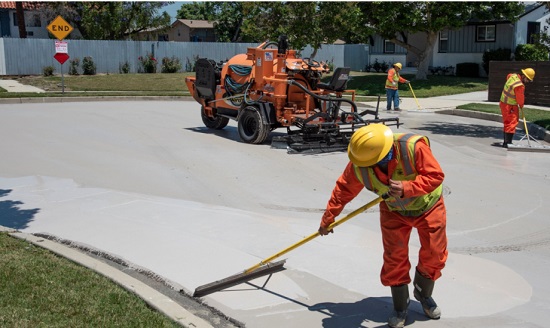 Thursday, April 18, 2024
Thursday, April 18, 2024  Thursday, April 18, 2024
Thursday, April 18, 2024 
When the scientists aboard the International Space Station direct their thermal camera at Los Angeles, standing out from the sweltering red and orange blob is a crescent of cool, blueish-white deep in the San Fernando Valley.
Greg Spotts, Chief Sustainability Officer of the City’s Bureau of Street Services (Streets LA), is proud of these wintry-looking pixels — not many people can say their work is visible from space. In this area, the center of the Valley’s Winnetka neighborhood, the pavement has been painted with a special reflective coating. “The locations near the cool pavement were, on average, two degrees Fahrenheit cooler than the surrounding area,” Spotts says.
“Previously, our measurements were focused on measuring the surface temperature of the roadway itself, which showed a difference of 10 to 15 degrees Fahrenheit on hot days,” he adds. The satellite thermal camera is significant, however, because it shows that the special cooling pavement not only lowers the temperature on the road but “produces a cooler neighborhood” in general.
Ten streets in ten neighborhoods have been treated with this cooling paint, and the next phase has just started: This month, bright yellow trucks will roll through West Hollywood and South L.A. to spray white coating on ten streets. “We have identified 200 city blocks across eight underserved neighborhoods for the next phase of urban cooling.”
The record heat waves that scorched the earth from Arizona to Antarctica this year will only get worse, and cities, where heat radiates off buildings and asphalt, will bear the brunt of this heat. “We’ve built our cities like ovens,” Spotts says. “We’re largely using the same materials we have been using since World War II. We need a large-scale change.” According to NOAA, highly developed urban areas can experience mid-afternoon temperatures that are 15 to 20 degrees Fahrenheit warmer than surrounding, vegetated areas. Reducing greenhouse gas emissions tackles the root cause, but in the meantime, cities are looking for ways to lower the temperature. One of the cheapest is to paint roofs and streets white.